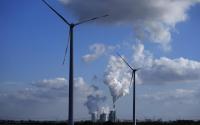30 March 2006The Sydney Morning Herald
Australia should be doing more to reduce its greenhouse gas emissions, The World Bank said in its latest regional update.
The East Asia and Pacific region was vulnerable to natural disasters, the intensity of which could be increased by climate change, the agency said in the report released in Sydney.
World Bank chief economist for East Asia and the Pacific Homi Kharas said the region should be extremely concerned about climate change and countries should be working towards "climate proofing new investments."
"Countries across the region need to do more to step up to the plate with reducing greenhouse gas emissions," he said.
"Australia is country which might be small but it is the second biggest country in greenhouse gas emissions."
Mr Kharas said that all countries, including Australia, should be doing a lot more.
Rapid economic growth in the East Asia and Pacific region has meant more greenhouse gas emissions.
East Asia was set to become a larger contributor over time as its economies expanded.
However, climate change was one of several challenges, such as trade, facing emerging East Asian economies, The World Bank said.
"We are in favour of a multilateral trade system in the region," said Mr Kharas.
"We are keen that trade be used as an instrument in poverty reduction, which means improving logistics.
"We try to make sure that standards in agriculture are meet so poorer countries can meet the import standards of countries like Australia and Japan."
East Asia was surpassing Europe as the most open region in the world with exports almost doubling in the past three years.
"East Asia's exports surged to over $US2 trillion last year, and this powered the regions growth," Mr Kharas said.
But The World Bank said sustained, strong economic growth had provided a foundation for declines in poverty in most East Asian economies in recent years.
"Strong growth in turn is having a dramatic impact on poverty reduction," Mr Kharas said.
"Although, 580 million people in the region still live on less than $US2 a day, this number has been falling by about 50 million people each year over the past five years."
Regional growth in the first half of 2005/06 had been hindered by a 25 year high in the oil price, rising interest rates, and slower growth in China, The World Bank said in its report, released twice a year.
But regional economies have since rebounded.
"Coming in to 2006 things look quite strong and we expect growth to continue through 2006 and into 2007," said Mr Kharas.
"If productivity is going to continue it must be driven by innovation and productivity growth."






